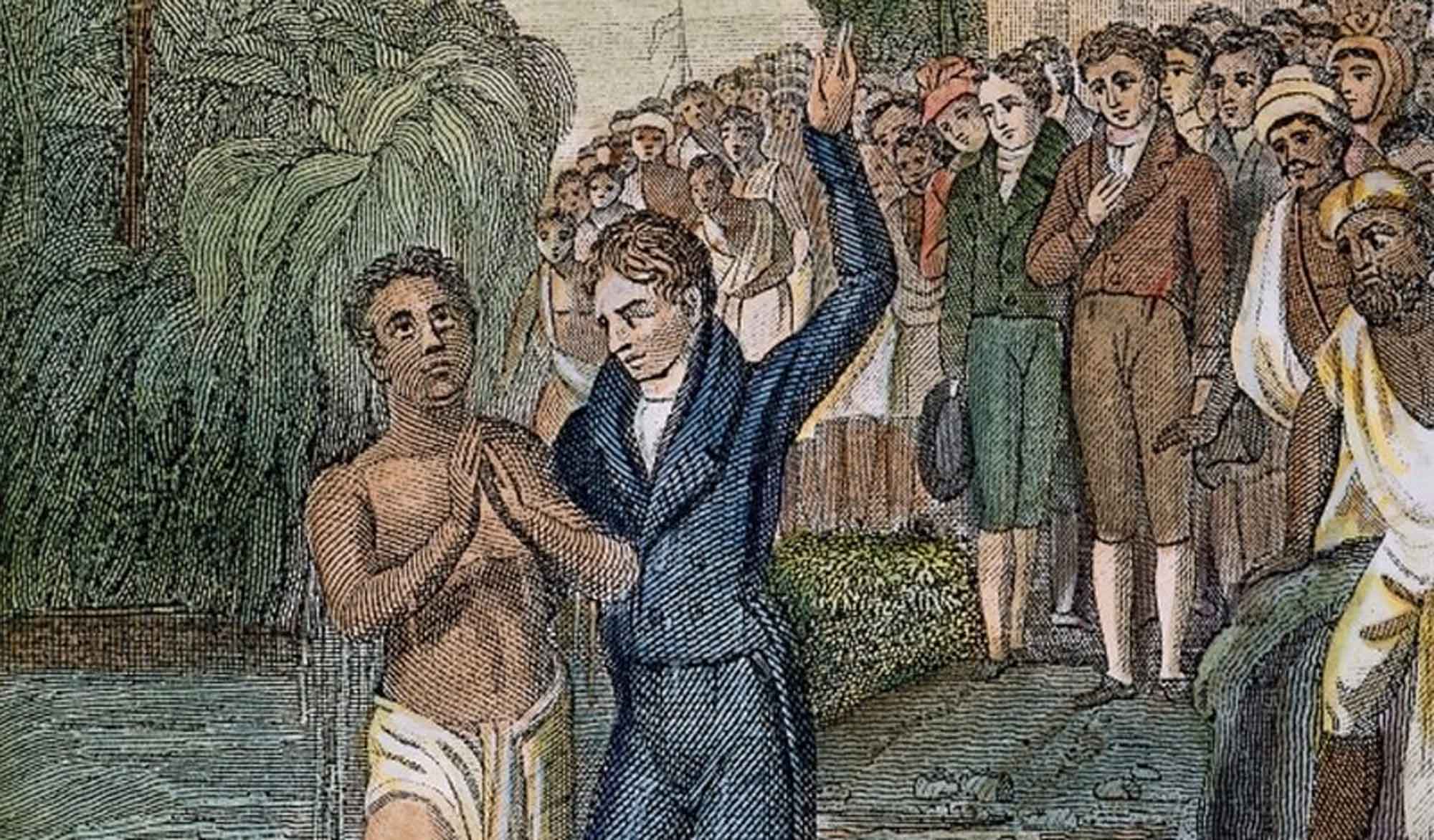by Swami B.G. Narasingha
The article, “The Aquarian Gospel of Jesus Christ” was written by Śrīla Narasiṅgha Mahārāja under the pseudonym of ‘Pradeep Sharma’ in 2007. This article was in response to various parties begging the question about Jesus being a devotee of Kṛṣṇa and citing a dubious work called the ‘Aquarian Gospel’ as evidence.
To some believers of the (Christian) faith the Aquarian Gospel is thought to be a book of great antiquity that verifies that Jesus journeyed to India in his youth. A general impression among some people seems to abound that Jesus came to learn from the wise in India and that he also visited temples and worshipped God (Kṛṣṇa) there. Nothing however could be farther from the truth.
The Aquarian Gospel is not actually a Christian gospel recognized by religious scholars. This pretence of a Christian gospel is the recent work of a 20th century American named Levi H. Dowling that he supposedly channelled from the Akashic (universal) records in 1908.
In the Aquarian Gospel where it is mentioned that Jesus went to Purī (in India) it also says that Jesus criticized the Deity of Lord Jagannātha. We have noted that the Aquarian Gospel takes the same stance against the Deity of Lord Jagannātha and Vedic Culture as did the bulk of missionaries in India during the 18th and 19th centuries. Possibly Dowling’s intent was to gain acceptability for his literary creation among the Christian critics of Jagannātha. In any case the Aquarian Gospel casts Jesus in the role not as one who came to India to learn or to worship God in the temples but to criticize Vedic theology and tradition.
Chapter 24 of the Aquarian Gospel states:
“In Purī, Jesus asks the brāhmaṇas about caste. The brāhmaṇas explain that according to the śāstra (Vedic scripture), the brāhmaṇas came from the mouth of Parabrahma (God), the kṣatriyas (kings) from the arms, the vaiśyas (farmers) from the thighs and the śūdras (workers) from His feet.
“Jesus exclaims that Parabrahma is not a God of justice and of right; for with his own strong hand he has exulted one and brought another low. The brāhmaṇas become angry at his blasphemy and with threats of violence, drove him from Purī.”
Chapter 26 of the Aquarian Gospel states:
“During the Ratha-yatra festival (temple procession), Jesus witnesses the cart (float) of Jagannātha being pulled and says: “Behold, a form without a spirit passes by; a body with no soul; a temple with no altar fires. This car of Kṛṣṇa is an empty thing, for Kṛṣṇa is not there. This car is but an idol of a people drunk on wine of carnal things. God lives not in the noise of tongues; there is no way to him from any idol shrine. God’s meeting place with man is in the heart, and in a still small voice he speaks; and he who hears is still.”
“The people ask Jesus, “To whom shall we bring gifts? Where shall we offer sacrifice? Jesus replies, “Our Father-God asks not for needless waste of plant, of grain, of dove, of lamb. That which you burn on any shrine you throw away. No blessings can attend the one who takes the food from hungry mouths to be destroyed by fire. When you would offer sacrifice unto our God, just take your gift of grain, or meat and lay it on the table of the poor. From it an incense will arise to heaven, which will return to you with blessedness.
“Tear down your idols; they can hear you not; turn all your sacrificial altars into fuel for the flames. Make human hearts your altars, and burn your sacrifices with the fire of love.”
The above reference certainly contains a mixture of both pleasing and disturbing words. Such is the handy work of Dowling. Throw in a few words at the end like “human hearts”, “love” and “sacrifice” to make it sound like something acceptable, but the gist of the above quote, if indeed true, certainly makes Jesus out to be exactly like the Christian missionaries in India, biased and offensive.
We have come across some information that some people are saying that Jesus was a pure devotee of Kṛṣṇa, but according to the Aquarian Gospel, Jesus is cast in the light of being one who does not accept the Deity form of God (Kṛṣṇa). This idea is unacceptable — that a pure devotee comes to India, but only finds fault in the Deity and learns nothing.
Our conclusion is that the so-called Aquarian Gospel is a fine work of religious fiction that aligns itself perfectly with the typical prototype of Christian anti-Vedic theology. It certainly casts no good light upon Jesus.
More Articles by Swami B.G. Narasingha
The Burning Cross – Part 3
In the third and final installment of ‘The Burning Cross’, Śrīla Narasiṅgha Mahārāja, under the alias of Pradeep Sharma, answers various questions that he received after posting ‘The Burning Cross’ parts 1 and 2. The questions concern quotes from Prabhupāda about Jesus, the Aquarian Gospel, the Bhaviṣya Purāṇa, Christian saints and Jesus as Brahmā.
A Little Distant and Below
‘A Little Distant and Below’ was written by Śrīla B.G. Narasiṅgha Mahārāja in 1996 as a letter to some of his godbrothers and godsisters in his mission. In this letter, Narasiṅgha Mahārāja discusses an article by Śrīla Śrīdhara Mahārāja (‘Fools Rush in Where Angels Fear to Tread’) which explains how higher topics of kṛṣṇa-līlā should be dealt with.
Ratha Yātrā in Navadvīpa
"Ratha Yātrā in Navadvīpa" was written by Swami B.G. Narasingha on September 5th 2000. This article was in response to a statement by Śrīpāda B.V. Nārāyaṇa Mahārāja in relation to Śrīla Śrīdhara Deva Gosvāmī Mahārāja. Narasingha Maharaja gives a brief history of the unfortunate situation. This article was followed up by another called "A Brief Response to "Ratha Yātrā in Navadvīpa."













